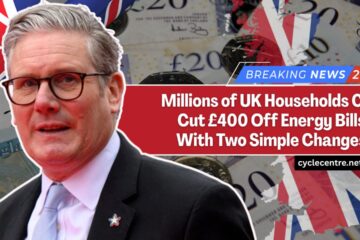From January 2026, the UK energy market will see another major change as the Energy Price Cap Adjustment comes into effect.
This adjustment, set by Ofgem (the national energy regulator), determines the maximum amount energy suppliers can charge households on standard variable or default tariffs.
The updated rates are designed to better reflect wholesale energy costs and the economic climate, following two years of sharp fluctuations in global energy prices.
This policy aims to ensure that UK households are shielded from unfair charges, while at the same time reflecting the reality of supply costs in a volatile market.
What the New Energy Price Cap Means
The Energy Price Cap UK 2026 directly affects the amount households will pay for electricity and gas.
Depending on your energy usage and region, you could see either small savings or continued pressure on bills.
While unit rates for both electricity and gas are seeing modest reductions, standing charges (the fixed daily costs) have barely changed.
This means households will still carry a baseline cost each month, regardless of how much energy they use.
New Energy Price Cap Rates (January 2026)
Here’s the official breakdown of the UK energy price cap January 2026 compared with the previous quarter:
| Category | Previous Cap (Oct 2025) | New Cap (Jan 2026) |
|---|---|---|
| Electricity (per kWh) | 27.35p | 25.90p |
| Gas (per kWh) | 7.42p | 6.89p |
| Daily Standing Charge (Electricity) | 53.01p | 52.40p |
| Daily Standing Charge (Gas) | 29.11p | 28.85p |
These changes reflect lower wholesale energy costs and improved supply contracts.
However, the small shift in standing charges means households won’t see a dramatic fall in their overall bills.
Impact on Household Bills in 2026
According to Ofgem, the average household using 2,700 kWh of electricity and 11,500 kWh of gas annually will now pay about £1,690 per year, down from £1,834 in the previous quarter.
- Winners: Families with moderate energy use and energy-efficient homes will notice meaningful savings.
- Neutral impact: Households with higher consumption, poorly insulated properties, or older appliances may see only minimal reductions in their monthly bills.
It’s important to remember that the price cap is not a subsidy. It is only a limit on charges to prevent households from being overcharged during unstable market conditions.
Why the Cap Matters
The price cap exists to offer consumer protection in times of volatile pricing.
Without this safeguard, households on default tariffs could face extreme and unpredictable hikes in energy bills.
However, the cap does not guarantee the cheapest deal.
Consumers are still encouraged to shop around for fixed-rate or alternative tariffs to secure better control over their household expenses.
Energy Trends Influencing 2026 Bills
The January 2026 adjustment is part of a wider conversation about the future of UK energy. Several trends will affect how much households really benefit:
- Smart Meters: Allowing better tracking of consumption and access to flexible tariffs.
- Energy Efficiency Investments: Homes with solar panels, insulation upgrades, and efficient appliances can maximize the benefit of lower unit rates.
- Green Incentives: Some suppliers are experimenting with time-of-use tariffs and renewable energy discounts, rewarding consumers who adjust their usage during off-peak hours.
For households willing to adapt, these strategies could unlock additional savings beyond what the cap provides.
Looking Ahead: Future Energy Price Reviews
Ofgem has committed to quarterly reviews, meaning the next update will be in April 2026. These reviews will depend on several factors:
- Global energy prices affected by supply chains and geopolitical events.
- UK climate commitments, pushing suppliers to shift toward renewable sources.
- Government policy, including grants and energy-efficiency programs.
Energy advocacy groups are urging consumers to watch out for insulation grants, government rebates, and support schemes that can reduce bills beyond what price caps alone achieve.
The UK Energy Price Cap Adjustment January 2026 brings a slight reduction in costs for many households, cutting the annual average bill to around £1,690.
While electricity and gas unit rates are falling, standing charges remain nearly unchanged, limiting the relief for some families.
This adjustment reflects stabilizing wholesale markets but does not solve long-term challenges like rising energy demand, infrastructure upgrades, and green transition goals. For households, the best approach in 2026 will be to stay informed, compare tariffs regularly, and invest in energy efficiency.
Doing so can make a noticeable difference, especially as Ofgem prepares for its April 2026 review.
Frequently Asked Questions
It is Ofgem’s updated limit on how much energy suppliers can charge households on standard variable tariffs, based on wholesale costs and market conditions.
Most households will see a slight decrease in bills due to lower per-kWh rates. However, standing charges remain nearly the same, so the savings depend on your energy usage.
Yes. The price cap only applies to default tariffs. Consumers can switch to fixed-rate deals or competitive offers at any time for better long-term savings.



0 Comments